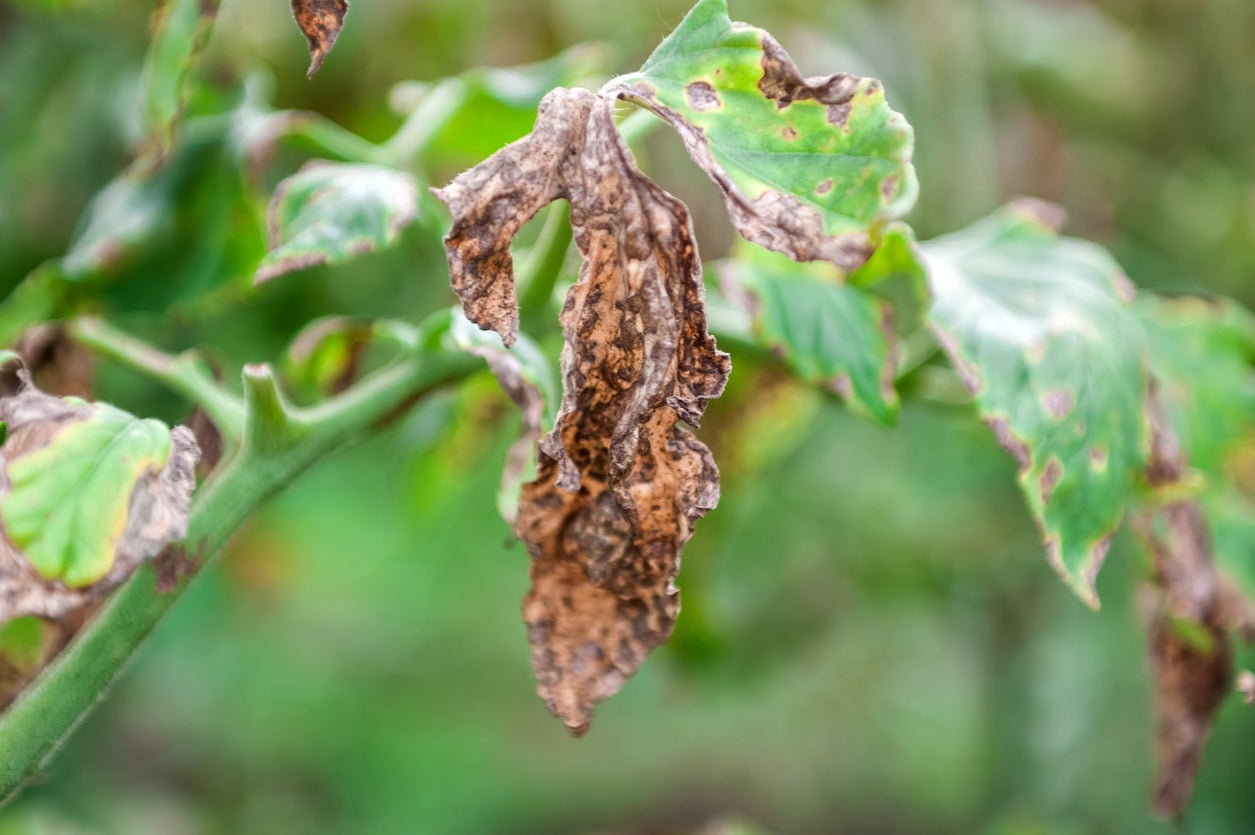Tomato Verticillium Wilt Control – How To Treat Tomatoes With Verticillium Wilt


Amy Draiss
Verticillium wilt can be a devastating infection for a tomato crop. This fungal infection comes from the soil and cannot be treated with fungicides. The best way to avoid it is to use resistant tomato varieties. It is also important to know the signs of the disease to avoid spreading it from one area of your garden to another.
What is Tomato Verticillium Wilt?
Verticillium wilt is a fungal infection that can affect numerous plants, including tomatoes. The fungus persists in the soil and on plant material. It forms threads that infect plants through the root hairs. The best conditions for verticillium to thrive are those of early spring: cool and wet. Moist soil at a temperature around 75 degrees Fahrenheit (24 Celsius) is ideal for the fungus to start infecting roots.
Signs of Verticillium Wilt on Tomatoes
Although the infection usually begins in spring, you may not see signs of it until summer. One of the first signs of tomatoes with verticillium wilt is the yellowing of older leaves. Yellow changes to brown and then the leaves die.
The disease also causes discoloration of vascular tissue, which you may see as brown streaks up the stems of tomato plants. This discoloration may also be patchy. New shoot tips may wilt and leaves start to curl upward and sometimes drop. The entire plant and individual fruits may be stunted.
Preventing Verticillium Wilt of Tomato
There is no fungicide that can be used to treat verticillium wilt on tomatoes or other plants, so prevention is necessary to avoid the damage this disease causes. First, start with resistant plants. Resistant cultivars are available and have the letter “V” after the name to indicate this.
Verticillium fungi will easily spread from one plant to another if you aren’t careful. Practice good sanitation when you have infections. Keep your tools and equipment washed and disinfected between using on affected and clean plants.
Also important is crop rotation. If you keep planting susceptible crops in the same soil year after year, the fungus will build up and cause repeated infections. Some of the more vulnerable plants in addition to tomatoes are potatoes, strawberries, eggplant, and melons. Plant cover crops, grains, or corn in off years to reduce the fungus in the soil.
Sign up for the Gardening Know How newsletter today and receive a free copy of our e-book "How to Grow Delicious Tomatoes".

Mary Ellen Ellis has been gardening for over 20 years. With degrees in Chemistry and Biology, Mary Ellen's specialties are flowers, native plants, and herbs.
- Amy DraissDigital Community Manager